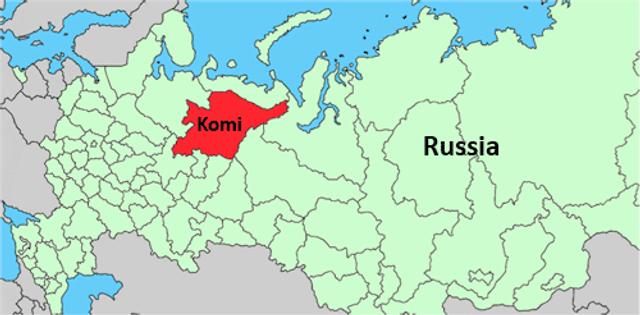Kevin Martinez
According to a recent study published by the California Budget & Policy Center, almost all income gains in the state since 1989 have gone to the top 1 percent of income earners.
In every geographic region, both urban and rural, the bottom 99 percent of households fell behind. The most unequal areas of the state included San Francisco, Silicon Valley, and Los Angeles, where the top 1 percent of household made on average more than 30 times the amount of money made by the bottom 99 percent.
The study, titled “The Growth of Top Incomes Across California” looked at three metrics: the growth of inequality between the top 1 percent and the bottom 99 percent, the change in average incomes between the two groups since 1989, and the share of the total income captured by the top 1 percent since 1989.
The wealthiest Californians fared the best in regions that saw economic growth over the last few decades, especially the San Francisco area. In the largest and richest urban centers like San Francisco, Los Angeles, and San Jose, inequality was the highest in the state. The top 1 percent of households in the San Francisco metro area made on average $3.6 million in 2013, 44 times what the average income was for the bottom 99 percent at $81,904.
Over the past generation, the wealth of the top 1 percent has soared over the rest of the population in nearly all of the state’s regions. Even in areas with smaller income gaps, like the Riverside-San Bernardino-Ontario metropolitan area, the top 1 percent’s income was nearly 13 times the average income of the bottom 99 percent.
In some areas, the only segment of society to see any significant income gains since 1989 was the top 1 percent. In San Jose, the top 1 percent increased their wealth by 248 percent, while the bottom 99 percent increased their wealth by only 23 percent. In the Los Angeles area, the top 1 percent increased their wealth by 55 percent, but the rest of the metropolitan area saw their average income plummet by 12 percent.
Even more troubling is that the top 1 percent has increased their share of the total growth in incomes over the last 25 years. With the exception of the Easter Sierra region, mostly rural Alpine, Inyo, and Mono counties, the share of income going to the top 1 percent increase in every region of California.
The highest share of income going to the top 1 percent was in the San Francisco metropolitan area, with 30.8 percent of the region’s income going to the wealthiest households in 2013, double the 1989 share of 15.8 percent.
A significant contributing factor to rising inequality is the rising cost of rent, especially in the large urban areas like Los Angeles and San Francisco. A study by Apartment List found that California had the fastest growing rents in all the US. A spokesman said, “California rents are growing nearly twice as quickly as the national average,” adding, “Rents have increased 5.7 percent over the last year compared to 3.3 percent nationwide, based on two-bedroom units.”
Rent increased in Los Angeles by 6.7 percent since the start of this year according to Apartment List. The two cities with the highest rent growth were San Jose with 8.9 rent increase and Anaheim at 9.2 percent.
An average two bedroom apartment in San Francisco costs $4,760; in San Jose, $2,700; and in Los Angeles, the average two bedroom apartment costs $2,650. In Los Angeles, the low median individual income was $27,749, making rent there and in California the least affordable in the United States, according to UCLA researchers, a result of the wide gap between income and costs.
In San Francisco, authorities have made clear their callous attitude toward the poor and homeless. City workers there cleared out a tent city under the Central Freeway this week after a deadline announced by public health officials passed last week. The homeless were told to leave the area within 72 hours before the San Francisco Police Department arrived to remove anyone who stayed behind.
The city moved 25 homeless people to Pier 80, a homeless shelter that can only house up to 150 people. The city also offered to take their belongings, dump them, or leave their things with the city’s operations yard, where they would be held for up to 90 days. Democratic Mayor Ed Lee said the city would remove at least two more tent cities in the coming weeks.
In Los Angeles, local authorities have promised millions of dollars to fight homelessness, but revealed their true aim with recent plans to crack down on tiny houses provided for free by private individuals. Although far from a solution to the problem of homelessness, the tiny houses are shelters the size of a garden shed which many homeless prefer over tents and sleeping bags.
City officials declared the tiny homes to be a threat to public health and safety and used allegations of drug use and crime to begin tearing them down. Many of the homeless were not told where to go upon losing their shelters.
While the city has pledged hundreds of millions of dollars to house the homeless, it has never been specified where the funds would come from, making the proposal untenable, at best. The homeless population in Los Angeles, the largest in the country, increased by 12 percent in the last two years, according to the Los Angeles Homeless Services Authority. The number of makeshift encampments has increased by 85 percent in the same time.
The rise in homelessness can be directly attributed to economic factors, especially the rising costs of renting an apartment or home, in addition to falling wages and mass unemployment. Politically, this process has been facilitated and, in fact, accelerated by the policies pursued by both the Democrats and the Republicans in federal, state and local governments, whose common goal is to ensure the protection of the interests of capital at the expense of the vast majority of society.
From the slashing of vital social programs that provide assistance to the poor to the bailout of banks for the enrichment of a tiny parasitic financial oligarchy, such policies have only exacerbated the immense class divide in California.


